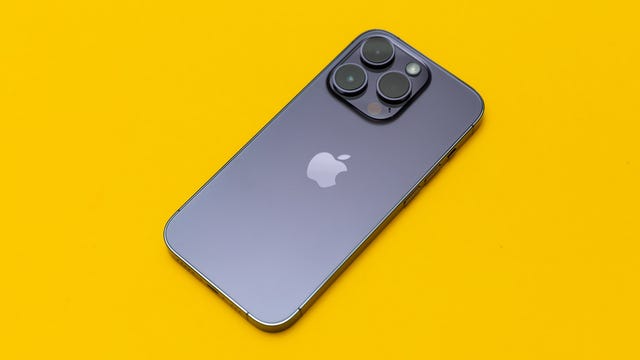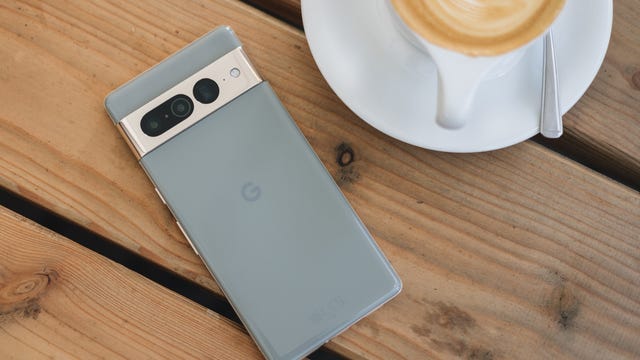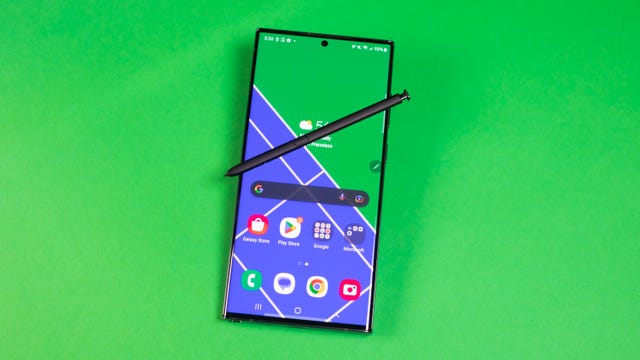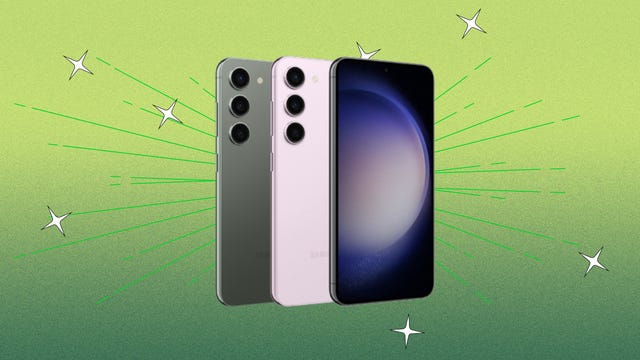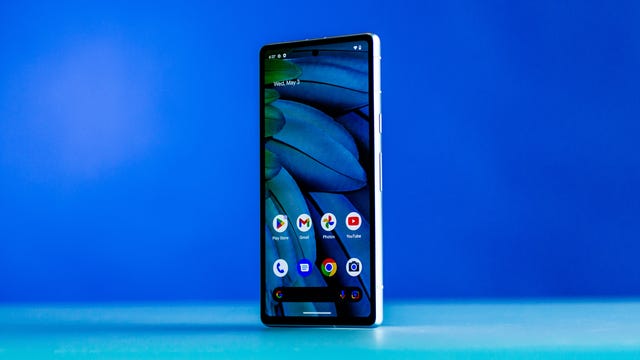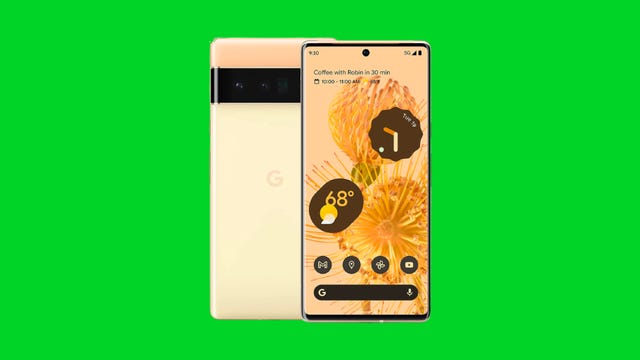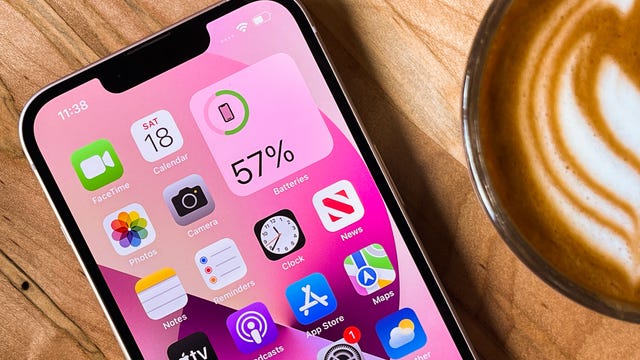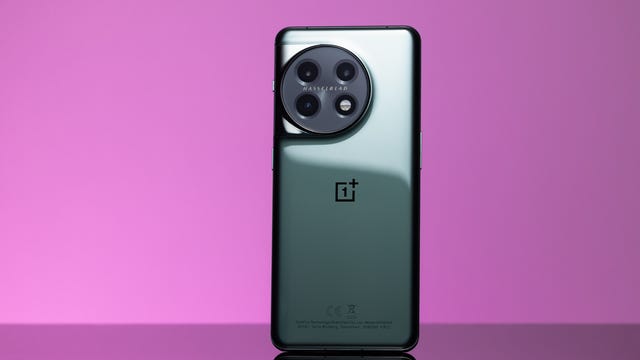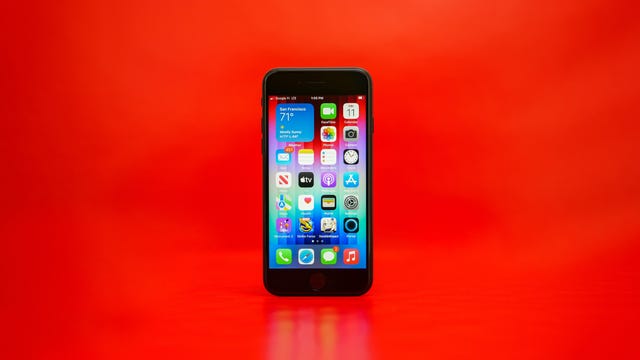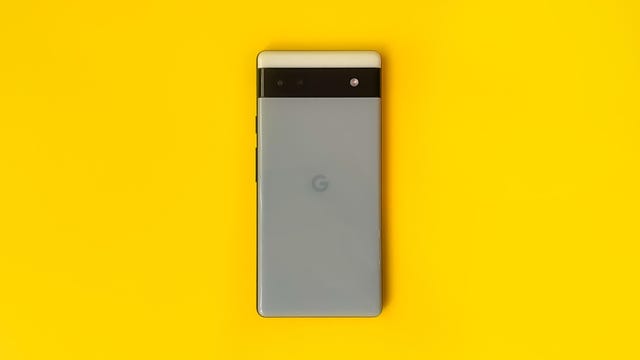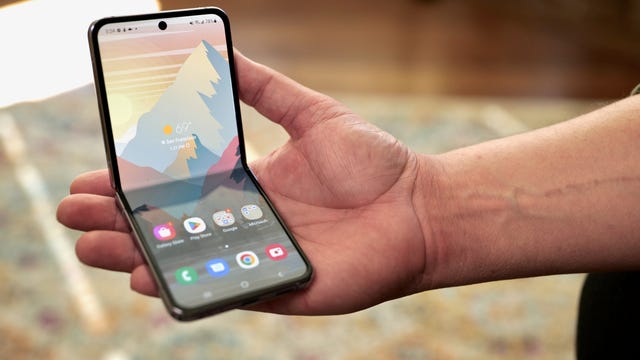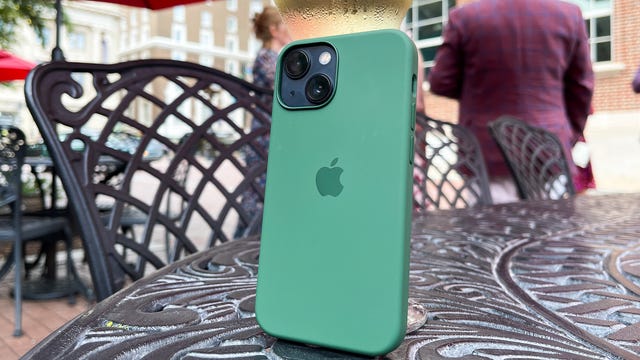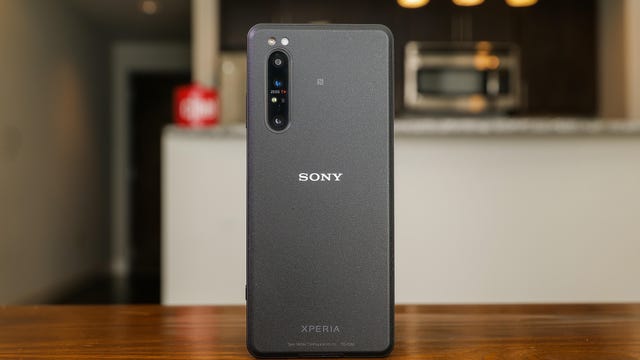Technologies
No Matter Your Budget, These Are the Best Phones of 2023
Whether you want the latest Samsung Galaxy phone, a shiny new iPhone or something simple and affordable like Google’s Pixel 7A, we’ve found the best phones for everyone.
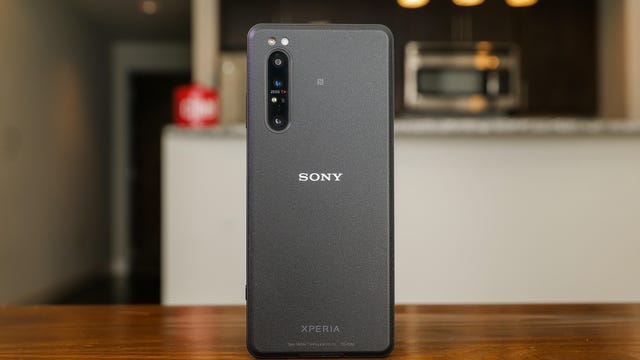
In this article:
Many of today’s phones offer fast performance, vibrant displays and powerful cameras. But with so many options, finding the right choice isn’t always easy. To simplify the decision, we’ve rounded up our top picks — each phone on this list meets the requirements for what CNET considers to be the best smartphones. From high-end phones to budget devices under $500 and everything in between, there are plenty of worthwhile options for everyone.
Every phone on this list has been thoroughly reviewed and tested, and you’ll find options across iPhone and Android that fit different needs.
What is the best phone for most people?
The Apple iPhone 14 and 14 Pro impressed us with excellent performance from their processors and the cameras. But if you aren’t an iPhone fan, there are plenty of great Android choices, including the Pixel 7 Pro and the Samsung Galaxy S23 Ultra. They both offer everything you could want, from high-end performance to superb cameras.
Advertiser Disclosure
Both the Pixel 7A and Galaxy S23 are ideal for those who prefer smaller phones, but the Pixel 7A is an excellent choice for those shopping on a budget at its $499 price.
There are a number of other top smartphones with eye-catching features, such as Samsung’s new Galaxy Z Fold 4, which has a foldable screen. These can be quite expensive, but if your cash doesn’t stretch that far, worry not. More and more affordable phones, such as the Pixel 6A, pack great specs, high-speed 5G connectivity and more approachable prices.
Most of the phones below are available unlocked and should be compatible with the big four US wireless carriers, unless otherwise specified. Many of the best phones of 2022 remain available and some are included below, but we review and update this list regularly and will keep you posted as we continue to test new models throughout 2023. For more info, read our guide to help find the best phone for your needs and take a look at our tips on how to buy a new Apple iPhone or Android phone and where to snag the best phone deals.
Best phones of 2023
Apple’s iPhone 14 Pro and Pro Max introduce sweeping changes like the Dynamic Island, a new 48-megapixel camera system and Apple’s new A16 Bionic processor. All of these upgrades come together to make for an experience that feels fresh and fast. The upgrades to the main camera allow it to take some truly stunning photos, making the phone a solid option if you’re into mobile photography.
As Apple’s top phone it doesn’t come cheap — especially if you want the larger Max model — but if you’re looking for the best all-round performance in an iPhone, then the 14 Pro is the phone to get.
While the base iPhone 14 doesn’t have the same triple camera array or new Dynamic Island notch as its pricier 14 Pro sibling, it still offers a lot to be excited about and comes with a more affordable price. CNET editor Patrick Holland describes it as «a good upgrade for most people» thanks to its solid performance, updated main camera and various other tweaks including a more repairable glass back in case it takes a tumble.
It’s not a huge overhaul from last year’s models, but if you’re in the market for a new iPhone and you don’t fancy spending the big bucks on the Pro series, then it’s a great option to consider.
With its stellar triple camera, refined design and spacious 6.7-inch screen, there’s a lot to love about the Pixel 7 Pro. Although it’s not very different from the previous Pixel 6 Pro, it will feel like a big change to those upgrading from a phone that’s more than two years old. Google has improved the zoom capabilities on the Pixel 7 Pro, giving it a 30x digital zoom compared to the 6 Pro’s 20x range for capturing tighter shots. Both the Pixel 7 and 7 Pro have some new features powered by Google’s Tensor G2 chip, such as the ability to sharpen old photos. You’ll also get free access to Google’s VPN on the Pixel 7 and 7 Pro.
At $899, the Pixel 7 Pro is cheaper than both the $1,000 Galaxy S23 Plus and $1,200 Galaxy S23 Ultra at their regular starting prices, making it a solid choice for those who want a giant screen and an excellent camera for less.
The Galaxy S23 is a lot, but in a good way. It’s more than most people need in a phone, but that doesn’t make it any less impressive. Samsung made improvements to the camera’s resolution (200 megapixels compared to 108 megapixels), color tones and dynamic range, while retaining the same edgy design and massive 6.8-inch screen as its predecessor. There’s also a new Qualcomm Snapdragon 8 Gen 2 processor that’s been optimized specifically for Samsung’s phones, which brings faster performance compared to the Galaxy S22 Ultra.
Starting at $1,200, it may be an understatement to call this phone expensive. But those willing to pay more for a giant screen and a high-quality, versatile camera won’t be disappointed. Read our Samsung Galaxy S23 Ultra review.
Android fans looking for a petite phone don’t have much to choose from. But the 6.1-inch Galaxy S23 provides a compelling option for those who want a phone that feels compact but still provides enough screen space. The Galaxy S23 comes with routine upgrades like a fresh processor (a version of Qualcomm’s Snapdragon 8 Gen 2 that’s been optimized for Samsung’s phones), a slightly new design and a higher-resolution selfie camera. But it’s the Galaxy S23’s larger battery that makes it worth recommending. Read our Samsung Galaxy S23 review.
Google’s budget phone took a leap forward in 2023 with the Pixel 7A, which offers many of the same benefits as the Pixel 7 but at a cheaper price. Like the Pixel 7, the Pixel 7A runs on Google’s Tensor G2 processor, meaning it has many of the same photo editing and language translation features as its pricier sibling. The Pixel 7A’s 64-megapixel camera also takes excellent photos that rival the Pixel 7’s in quality.
While we still like the Pixel 7, the Pixel 7A’s lower price makes it a better deal for most people. Only opt for the Pixel 7 if you really want a slightly larger screen and are willing to pay the extra $100 for it. Otherwise, the main differences between the Pixel 7 and 7A come down to the former’s more durable build, slightly faster charging and its ability to wirelessly charge compatible accessories. The Pixel 7 also has a larger camera sensor that’s more sensitive to light, according to Google, but CNET’s Lisa Eadicicco didn’t notice much of a difference.
Google no longer sells the Pixel 6 Pro through its website, but you can still find it through some third-party retailers at a significant discount for now. The Pixel 6 Pro’s unique design, great software additions, superb camera quality and solid all-around performance earned the phone an excellent rating when CNET reviewed it in 2021. It’s more than a year old, but many of our initial impressions still hold true. All told, it’s a worthwhile choice for those who want a spacious screen and a top-notch camera on a budget.
While Apple’s new iPhone 14 and 14 Pro might be the more exciting options with their upgraded cameras and the Pro’s new Dynamic Island notch, Apple is still selling the base iPhone 13.
The standard iPhone 13 is a reliable choice for most people, sporting a 6.1-inch screen and two excellent rear cameras. We loved the iPhone 13’s balance of power, camera performance and price and while it’s not a huge amount of money saved over the base iPhone 14, if you’re looking for a new handset and trying to keep your costs down it could be money well saved.
The $700 OnePlus 11 is a powerful phone that’s well equipped to handle gaming, video streaming and other common tasks. In typical OnePlus fashion, this phone is also cheaper than the $800 Galaxy S23 and $900 Pixel 7 Pro. The cameras aren’t the best, but they’re fine for casual photographers that just want to capture their next vacation or a night out. What sets the OnePlus 11 apart from many of its rivals is its blazing fast 100-watt fast charging, which can replenish the battery in just 25 minutes. (The US version only supports 80-watt charging, but that’s still an improvement over the Galaxy S23 Ultra’s 45-watt charging). Overall, the OnePlus 11 is ideal for those who want a powerful phone that charges quickly and won’t break the bank. Read our OnePlus 11 review.
Apple’s 2022 iPhone SE may not have the incredible multiple cameras of the top-end iPhone 13 Pro, but the iPhone SE has a lot to offer if you’re looking for a great experience without spending flagship levels of cash. It’s 5G-enabled, for one, it runs the latest iOS 15 software and it packs the same A15 Bionic processor found in Apple’s top phones. As a result, performance is lightning-fast.
The Pixel 6A impressed CNET’s Lisa Eadicicco last year with its attractive design and Tensor processor, which enabled it to inherit many of the same features as the Pixel 6 but at a cheaper price. Now, Google has knocked the price down to $349, making it an even better value.
The Pixel 6A has a 6.1-inch screen, making it the same size as the Pixel 7A and slightly smaller than the Pixel 7. While it’s missing out on certain newer features that require the Tensor G2, it still has a lot to offer for the price. With the Pixel 6A, you get Google-specific features like Face Unblur, which sharpens a subject’s face in blurry photos, and Real Tone, which renders skin tones more accurately in photos.
Samsung’s $1,000 Galaxy Z Flip 4 is the most portable and fun phone CNET’s Patrick Holland reviewed last year. It inherits the best parts of the Z Flip 3, like its pocketable flip phone-inspired design and Flex Mode, which makes it easier to use the phone when it’s propped open halfway. The Z Flip 4 also has a new image sensor, which improves image quality compared to the Flip 3, along with a bigger battery and newer processor.
These improvements address some of the Z Flip 3’s biggest shortcomings, even though Samsung didn’t give us everything we wanted (like a larger cover screen). But all told, the Galaxy Z Flip 4 is a great choice for those who want a phone that’s more portable than almost anything else you’ll find on the market.
You could also go for the Galaxy Z Flip 3, which Samsung still sells at a lower $900 price. But that’s still a lot to spend on a new phone, so I’d recommend spending a little extra now that the Galaxy Z Flip 3 is roughly a year and a half old. You might as well invest in newer technology that will last longer if possible, especially if you can score a good trade-in deal.
If you’re someone who prefers smaller, pocket-friendly devices, this is the phone for you. The 6.1-inch iPhone 13 Mini is easy to use with one hand and even fits into tight jean pockets. Starting at $599, this is the cheapest model in Apple’s iPhone 13 lineup. While battery life isn’t as long as on the iPhone 13, this petite Apple iPhone doesn’t sacrifice on camera capabilities or processing power.
At a whopping list price of $2,500, the Sony Xperia Pro isn’t for everyone (though it’s now available for around $1,000). But if you’re a photographer or videographer looking for professional-level camera phone features, you can’t go wrong. The Xperia Pro is essentially four products in one: a phone, a camera monitor, a speedy photo file transfer device, and a 5G machine suitable for broadcasting and livestreaming.
How we test phones
Every phone on this list has been thoroughly tested by CNET’s expert reviews team. We actually use the phone, test the features, play games and take photos. We assess any marketing promises that a company makes about its phones. And if we find something we don’t like, be it battery life or build quality, we tell you all about it.
We examine every aspect of a phone during testing:
- Display
- Design and feel
- Processor performance
- Battery life
- Camera quality
- Features
We test all of a phone’s cameras (both front and back) in a variety of conditions: From outdoors under sunlight to dimmer indoor locales and night time scenes (for any available night modes). We also compare our findings against similarly priced models. We have a series of real world battery tests to see how long a phone lasts under everyday use.
We take into account additional phone features like 5G, fingerprint and face readers, styluses, fast charging, foldable displays and other useful extras. And we, of course, weigh all of our experiences and testing against the price so you know whether a phone represents good value or not.
Read more: How We Test Phones
Phone FAQs
What makes a good phone camera?
All of today’s phones pack some kind of camera setup on the back, with most packing multiple ones like ultrawides or telephoto zooms. More expensive phones, like the iPhone 14 Pro, use larger image sensors, better-quality lenses and image stabilization that let in more light, capturing detailed images with beautiful colors — in daylight and at night. Typically, the more you pay, the better quality you’ll get, with the most advanced features being reserved for the most expensive flagships.
What is the best phone case?
There’s a vast array of case options for almost every phone on the market, so which one is best really comes down to what you need it for. Many cases are simply there for the style. And while these cases will certainly help keep light scratches and scuffs off your phone, you should look toward more specialized rugged cases if you want to take your smartphone on a rough-and-tumble adventure into the outdoors.
How long should a phone battery last?
Most smartphones — even those at the top end — should be able to deliver a full day of mixed use out of a single charge. That means you should have a bit of juice left at the end of your day, but you should expect to give it a full charge when you plug it in next to your bed at night.
How much storage should my phone have?
Most phones tend to come with a minimum of 128GB of storage, which is a good amount for apps, games and locally stored music. But it’s important to think about what you’ll be doing with your phone. If you want to download and play a lot of games, then consider opting for a higher-capacity version.
What makes a phone a smartphone?
Smartphones let you do more than just make calls; they connect to the internet for web browsing, you can download apps and games, and they typically have cameras capable of taking — and displaying — photos and videos. In short, they’re just what we know of today as a «phone,» and everything on this list qualifies as a smartphone.
More phone buying guides
Technologies
The Black Friday Gaming Deals Are Here. Shop Now and Save Big on PlayStation, Xbox and Alienware
Technologies
Looking for a Free iPhone? Verizon Will Basically Hand You One With This Black Friday Offer
Technologies
Smartphone vs. Dumb Phone: Why People Are Going Basic
Here’s how to ditch your smartphone for a dumb phone. It’s digital detox done right.
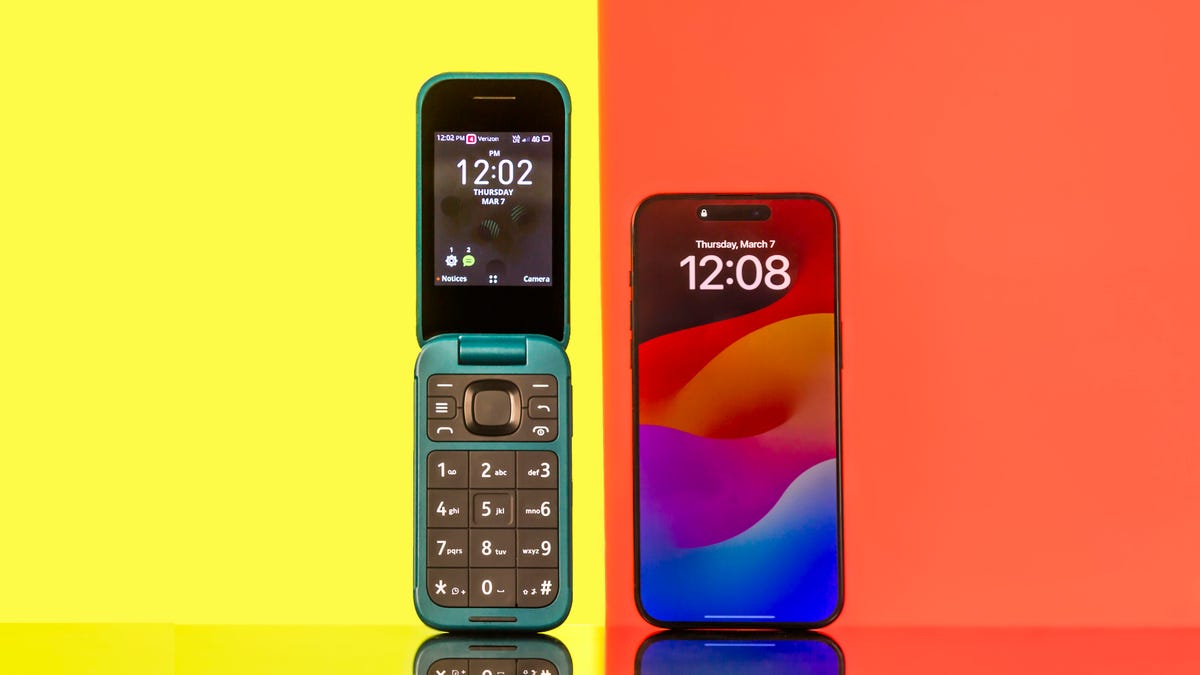
Over the past couple of decades, smartphones have become an integral part of our lives. According to the Pew Research Center, about 91% of Americans own a smartphone. Statista reports that the number of global smartphone owners is estimated to reach 6.1 billion in 2029. For many, a smartphone is an always-on internet device that keeps us connected to the world.
But there are also significant downsides to having one. If you’re concerned about how much time you spend on your phone, you aren’t alone: Some people feel addicted to their smartphones, checking their email and social media feeds hundreds of times a day. Perhaps you find yourself doomscrolling through the news or wasting time on mindless apps and games rather than being productive at work or spending quality time with your family. Sure, you could simply limit your screen time, but that takes willpower that you might not have.
This rise in this obsessive behavior toward smartphones explains the resurgence of so-called dumb phones in recent years. Sometimes referred to as feature phones, dumb phones are essentially stripped-down cellular devices that lack the bells and whistles of modern smartphones. Some only let you call and text, while others have a few more features such as a camera or a music player. Dumb phones typically offer only the most basic of features, minimal internet and that’s about it.
If that intrigues you, read on. In this guide, we’ll highlight the different kinds of dumb phones on the market, what you should look for when shopping for one, and whether a dumb phone is even right for you.
The differences between a dumb phone and a smartphone
A smartphone is essentially a tiny computer in your pocket. A dumb phone lacks the apps and features that smartphones have. More advanced dumb phones, or «feature phones,» offer a camera and apps like a calendar or a music player. Some even have minimal internet connectivity.
Many dumb phones are reminiscent of handsets with physical buttons from decades ago. Others have a T9 keypad where you press the numbers with the letters on the keypad and the phone «predicts» the word you want.There are even feature phones with touchscreens and more modern interfaces.
What should you look for when getting a dumb phone?
The dumb phone that’s best for you will depend on the reason you’re getting it. Do you want to go without internet access entirely and do it cold turkey? Then, perhaps a basic phone is what you want. Basic phones are also great if you just want a secondary emergency backup handset. Do you want at least some functionality, like Wi-Fi hotspot capabilities or navigation directions? Then look into «smarter» dumb phones that have those features.
Alternatively, if you think you still need certain smartphone apps like WhatsApp or Uber, you could look into «dumbed down» Android phones with smaller screens and keypads (sometimes called Android dumb phones). They don’t qualify as dumb phones technically, but they’re often seen as an in-between solution for those who can’t quite commit to a lifestyle change.
What are the different kinds of dumb phones on the market?
As more people seek smartphone alternatives, a large number of modern dumb phones have emerged on the market. If you’re on the hunt for one, we recommend using Jose Briones’ excellent Dumbphone Finder, which lets you filter and browse a dizzying array of choices based on your preferences and network provider. We also suggest perusing the r/dumbphones subreddit, where you’ll find a community of dumb phone enthusiasts who can assist you in your dumb phone journey.
Here are a few different kinds of dumb phones that caught our attention.
Smarter dumb phones
If you have a tough time letting go of your smartphone, there are a few smarter dumb phones on the market that might be a good gateway into the smartphone-free world. They often have touchscreen interfaces and more features you’d find on smartphones, like a music player or a camera.
Perhaps the smartest dumb phone on the market right now is the Light Phone 3, which has a 3.92-inch OLED screen and a minimalist black-and-white aesthetic. Its features include GPS for directions, Bluetooth, a fingerprint sensor, Wi-Fi hotspot capabilities, a flashlight, a 50-megapixel rear camera, an 8-megapixel front-facing camera and a music player. It also has 5G support, which is something of a rarity among dumb phones.
However, it’s expensive at around $700, which is almost the same price as a higher-end smartphone. Light also sells the Light Phone 2, which lacks cameras and a flashlight, but it’s much cheaper at $300 (about the price of a midrange smartphone). It uses an E Ink screen instead of OLED. However, some reviews have said that the texting speed is pretty slow.
Another touchscreen phone that’s similar to an e-reader and is fairly popular with the dumb phone community is the Mudita Kompakt. It has wireless charging, an 8-megapixel camera, GPS for directions, a music player, an e-reader and basic apps including weather, a calendar and more.
Barebones phones
On the other hand, if you’re ready for a full digital detox, then you could consider just a basic phone that lets you call, text and not much else. Simply harken back to the phones of decades ago and you’ll likely find one that fits that description.
One of the major brands still making basic phones is HMD Global, which also makes Nokia-branded handhelds like the Nokia 3210 and the Nokia 2780 Flip. HMD makes its own line of phones too, such as the iconic pink Barbie phone, complete with a large Barbie logo emblazoned on the front. It even greets you with a cheerful «Hello Barbie» each time it powers on. We should note, however, that HMD has said it’s exiting the US, so the only way to get one might be through third-party reseller in the near future.
There are still basic phones being sold in the US. The Punkt MP02 is one of the more interesting models, thanks in part to its unique slim design and clicky buttons. You can even send messages via Signal with it, though you’ll have to text via the old-fashioned T9 method.
Android dumb phones
Some dumb phone purists might argue that anything Android doesn’t belong in this list, but if your main goal in quitting your phone is to be free of the social media algorithm, then perhaps a scaled-down smartphone is a good halfway point for you. A couple of examples are the Unifone S22 Flip phone (formerly the CAT S22 Flip phone) and the Doov R7 Pro candy bar (available outside of the US), both of which are Android handsets but have traditional cell phone designs (The Unifone S22 Flip runs Android Go, a simplified version of Android).
This way, you still have access to your «must-have» apps, and might be able to better withstand the temptation of social media because of their tiny size and shape (or at least that’s the theory).
Should you buy an old or used dumb phone? Will it work on a carrier’s 5G network?
There’s nothing wrong with buying an old or used dumb phone, but you should make sure that it works with your cellphone network. Not all phones work with all networks, and certain carriers in the US aren’t compatible with every device, so check their restrictions. AT&T, for example, has a whitelist of permitted devices and you generally can’t use something that isn’t on that list.
As for 5G support, that’s pretty rare when it comes to dumb phones, mostly because they often don’t really need it (they typically won’t see the benefit of faster data speeds, for example). Some, however, do have 5G support, such as the Light Phone 3, the Sonim XP3 Plus 5G and the TCL Flip 4. If 5G support is important to you due to network congestion concerns, then that’s something you can keep an eye out for.
What if I’m not able to give up my smartphone just yet?
Maybe you need your smartphone for work or emergencies, or maybe you just don’t find any of the existing dumb phones all that appealing. If you don’t mind exercising your willpower, there are existing «wellness» tools on both Android and iOS that could help limit your screen time by allowing you to set app timers or downtime modes.
You could also disable and uninstall all your most addictive apps and use parental control tools to limit your screen time. Last but not least, there are several apps and gadgets designed to help you cut back on doomscrolling, like the Brick and the Unpluq tag.

